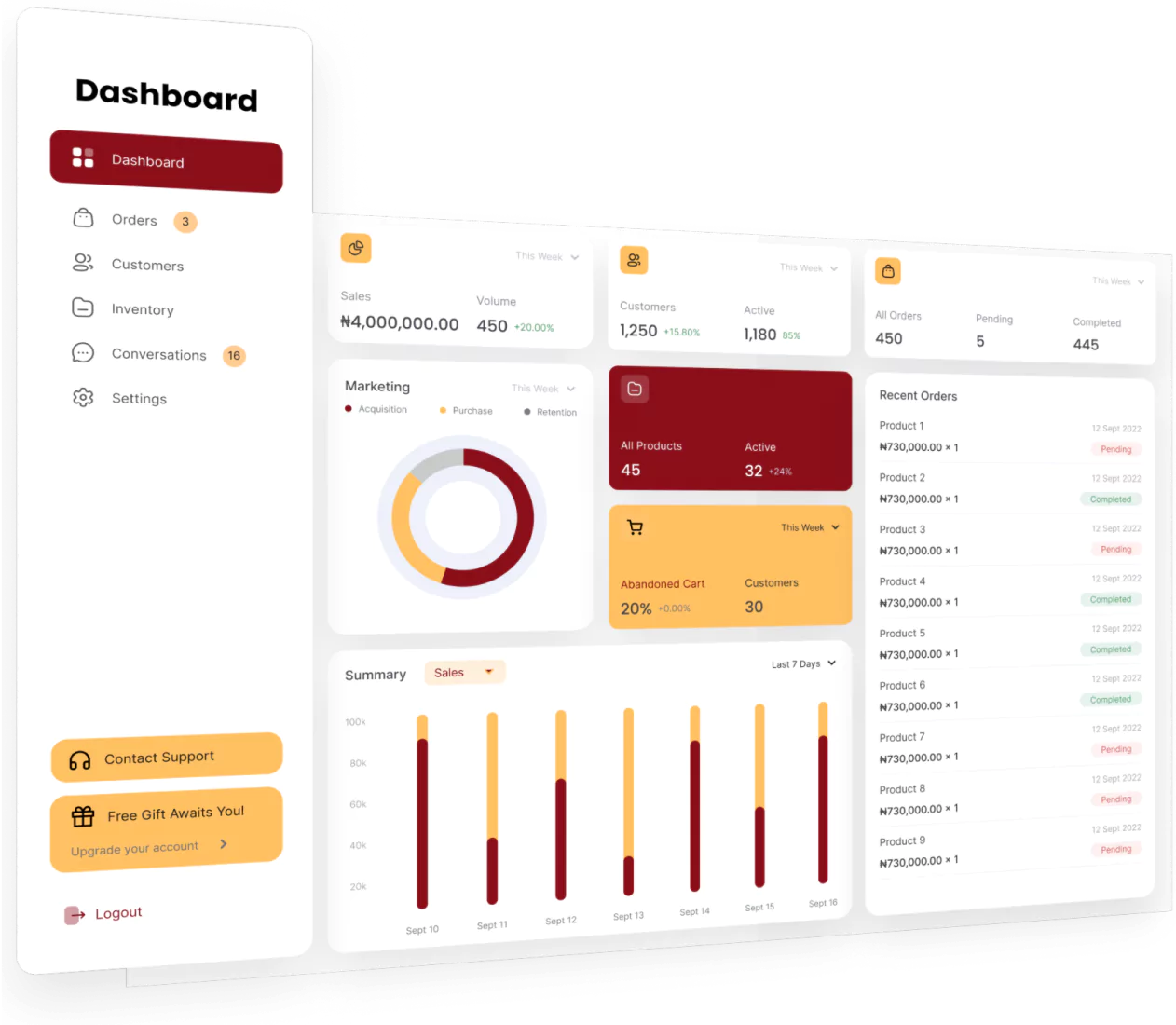Carbon emissions are no longer just an environmental issue, they have become a key factor in shaping smart business strategies. As regulations tighten and stakeholders demand greater transparency, understanding your company’s carbon footprint is as important as tracking revenue.
Carbon tracking refers to the process of measuring, analyzing and managing greenhouse gas emissions to support better decision-making. Despite its importance, many companies still face challenges such as fragmented data, time-consuming manual processes, and limited visibility.
What’s encouraging is that with the right tools, carbon tracking doesn’t need to be complicated. This article demonstrates how effective carbon tracking can enhance operational efficiency, bolster ESG initiatives, and foster long-term value.
You’ll also discover how HashMicro’s intelligent business systems can help simplify and support your sustainability goals read on to find out how your business can lead with impact and insight.
Key Takeaways
|
Table of Contents

What is Carbon Tracking?
Carbon tracking is the systematic process of measuring and analyzing an organization’s greenhouse gas emissions across its operations, supply chain, and energy consumption.
Nagbibigay ito ng malinaw na larawan kung saan nagmumula ang mga emisyon, maging ito man ay direkta mula sa internal na operasyon o hindi direkta sa pamamagitan ng mga third-party na kasosyo.
By gaining visibility into these data points, businesses can identify inefficiencies and build more sustainable strategies that align with both regulatory expectations and long term corporate goals.
-
Key principles of carbon accounting
Carbon accounting is grounded in a set of core principles that ensure emissions data is both meaningful and actionable. These principles provide a consistent framework for tracking and reporting greenhouse gas emissions across all areas of a business:
- Relevance: Focuses on including all significant emissions sources that are relevant to the company’s operations, strategy, and stakeholder needs.
- Completeness: Ensures that no material emissions are left out, providing a comprehensive view of the organization’s total carbon footprint.
- Consistency: Encourages the use of consistent methodologies over time, enabling accurate comparisons and reliable tracking of progress.
- Transparency: Requires clear documentation of methods, assumptions, and limitations, helping stakeholders understand how the data was generated and interpreted.
- Accuracy: Aims to reduce uncertainty as much as possible, using precise data and calculations to support sound decision making and reporting.
2. Understanding emission scopes
This is where the concept of emission scopes becomes essential. Dividing emissions into clear categories enables organizations to identify their responsibilities, set priorities, and design targeted reduction strategies. Emissions are generally classified into three scopes:
- Scope 1: Direct Emissions
These are emissions that come directly from sources owned or controlled by the company such as fuel burned on-site, company vehicles, or manufacturing processes. Because these emissions occur within the organization’s boundaries, they’re typically the easiest to monitor and manage. - Scope 2: Indirect Emissions from Energy
These are emissions generated from the production of electricity, heating, or cooling that the company purchases and consumes. While businesses don’t directly produce these emissions, they’re still responsible for them since the energy is used in their operations. - Scope 3: Other Indirect Emissions
Often the most complex, Scope 3 includes all other indirect emissions throughout a company’s value chain. This can include everything from the production of purchased goods and services to employee commuting, business travel, and waste disposal.
What is Carbon Reporting?
Carbon reporting is the process of disclosing an organization’s greenhouse gas emissions in a structured and standardized way. It involves collecting emissions data, organizing it by scope, and sharing the results with internal stakeholders, regulators or investor.
The goal is not only to demonstrate accountability but also to provide transparency around a company’s environmental impact and its progress toward sustainability goals.
When done right, carbon reporting becomes a valuable tool for building trust and informing long-term business strategy.
Why are Carbon Tracking and Reporting Important?
To understand the true impact of our actions on the environment, we first need to measure it. That’s where carbon tracking and reporting come in.
These practices form a critical part of any effective ESG strategy, helping organizations operate more responsibly and sustainably. Here are a few key reasons why carbon tracking and reporting matter:
- Identifies major sources of emissions: Tracking carbon emissions helps organizations pinpoint where most of their emissions come from whether it’s energy use, transportation, or supply chains. Knowing this makes it easier to focus reduction efforts where they matter most.
- Supports better business decisions: With accurate carbon data, businesses can make informed choices, such as switching to renewable energy or optimizing operations.
- Meets regulatory requirements: More governments are requiring companies to disclose their emissions. Having a solid reporting system helps you stay compliant and avoid potential penalties.
- Tracks progress toward sustainability goals: You can’t improve what you don’t measure. Reporting makes it easier to track your progress over time and adjust your strategies to stay on course with climate goals.
Best Practices for Successful Carbon Tracking
Tracking carbon emissions effectively requires more than just good intentions, it demands a structured and thoughtful approach. Without a clear system, data can easily become inconsistent or incomplete, making it difficult to draw meaningful insights or take action.
By following best practices, organizations can ensure that their carbon tracking is reliable, transparent, and aligned with broader sustainability goals.
This not only helps in meeting regulatory and stakeholder expectations but also lays the groundwork for long term environmental impact and business resilience.

5 Simple Ways to Reduce Your Company’s Carbon Emissions
Reducing your company’s carbon footprint doesn’t always require a complete overhaul. Often, small, practical changes when done consistently can lead to meaningful results. Here are five straightforward strategies that any business can start implementing:
- Switch to energy-efficient lighting and equipment: Upgrading to LED lighting and energy-efficient office equipment is one of the simplest ways to cut energy use. These small changes reduce electricity consumption and lower utility bills, making them both eco-friendly and cost-effective.
- Encourage remote work and virtual meetings: Reducing employee commuting and travel can significantly cut emissions. Embracing hybrid or remote work options, along with utilizing video conferencing tools, helps reduce your company’s carbon footprint while enhancing flexibility.
- Reduce, reuse, and recycle office materials: Simple steps like going paperless, reusing supplies, and setting up clear recycling stations in the office can reduce waste and support a circular economy mindset among employees.
- Work with sustainable vendors and partners: Choosing suppliers that prioritize sustainability helps reduce indirect emissions. Look for partners with responsible sourcing practices and low-carbon.
Simplify Carbon Tracking with HashMicro’s Smart Solutions

Carbon tracking can often feel complex and time-consuming, especially for businesses managing multiple operations. With HashMicro’s carbon tracking system, companies can automatically collect emissions data across departments, monitor environmental performance in real time, and comply with regulatory standards.
This not only helps businesses stay compliant but also empowers them to make informed decisions that drive sustainability and operational efficiency.
- Automated emissions data collection: Seamlessly gather data from various business activities without manual input. The system integrates with your operations to track emissions in real time.
- Customizable reporting dashboards: Create clear, easy-to-read reports that align with industry standards or internal key performance indicators (KPIs). Perfect for audits, internal reviews, or stakeholder presentations.
- Real time monitoring: Access live updates on your carbon performance and spot emission spikes early. Stay proactive, not reactive.
- Integration with existing systems: HashMicro works smoothly with your current ERP, inventory, or energy systems no need for complex reconfigurations.
Conclusion
Carbon tracking is more than just a sustainability effort. It has become a valuable tool for improving operational efficiency, reducing costs, and making well-informed business decisions. By gaining clear insights into emissions across various processes, companies are better equipped to take meaningful action.
If your business is looking to take that next step toward smarter carbon management, HashMicro provides a powerful, easy to use solution that helps simplify and streamline the entire process.
To see how it works in action, you can request a free demo and discover how it can support your sustainability goals while enhancing performance.

FAQ Carbon Tracking
-
What is a carbon tracker?
Carbon Tracker is an independent financial think tank that carries out in-depth analysis on the impact of the energy transition on capital markets and the potential investment in high-cost, carbon-intensive fossil fuels.
-
What are three main carbon capture technologies?
They fall into three categories: post-combustion carbon capture (the primary method used in existing power plants), pre-combustion carbon capture (largely used in industrial processes), and oxy-fuel combustion systems.
-
What is the best carbon capture?
Forests. Forests and woodlands are considered one of the best forms of natural carbon sequestration. CO2 binds to plants during photosynthesis, exchanging it for oxygen as a purifying emission.



































































